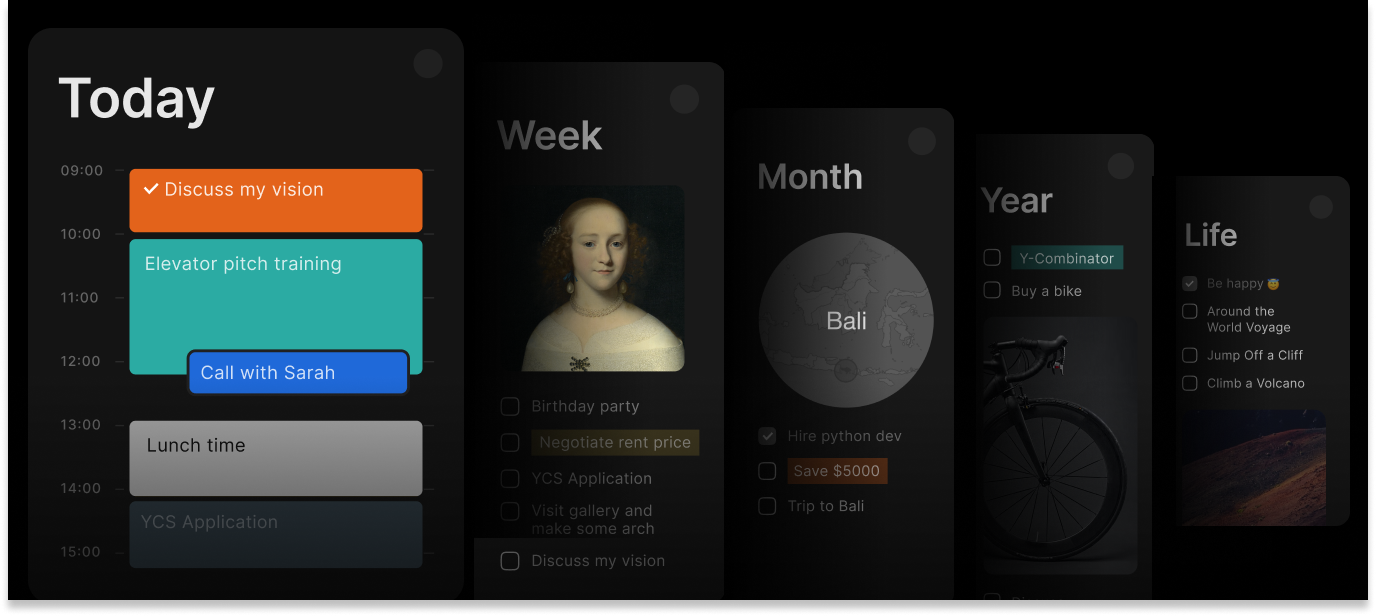How To Set Goals: Your Complete Guide to Success

Understanding how to set goals effectively is the cornerstone of personal and professional success. Many people struggle with achieving goals because they don’t know where to begin or how to create a systematic approach. Learning how to set goals and achieve them requires mastering fundamental principles that transform vague aspirations into concrete accomplishments. When you set goals with intention and clarity, you create a powerful framework for success.
The journey of reaching goals begins with understanding how to achieve goals through strategic planning and consistent action. Whether you’re wondering how to set a goal for the first time or looking to improve your existing approach, the key lies in developing proven systems. Successful individuals achieve goals by following specific methodologies rather than relying on luck or wishful thinking. Every goal achieved represents the culmination of deliberate effort and smart planning.
If you’re serious about how to achieve your goals, you must first learn how to make goals that are both meaningful and attainable. The process of making goals involves more than just writing down what you want—it requires understanding the essential steps to achieve goals systematically. Effective goal setting strategies combine vision with practical action, while proven goal setting tips help you avoid common pitfalls that derail progress.
Learning how to make a goal that truly resonates with your values and aspirations is crucial for long-term success. The art of setting goals and achieving them requires both inspiration and practical methodology. Through setting and achieving goals, you develop the confidence and skills necessary for continuous improvement. Understanding how to achieve a goal efficiently can transform your entire approach to personal and professional development. The best tips for goal setting emphasize clarity, specificity, and actionable planning as the foundation for all meaningful achievement.

Why Goals Matter
Setting goals is like having a roadmap for life’s journey—it’s what keeps successful people and organizations on track. Studies show folks with clear goals are way more likely to hit their targets than those just wishing for things to work out. Having a defined target lights a fire under you, sharpens your focus, and gives a sense of purpose, even when the going gets tough.
Beyond just checking boxes, goals help shape decisions. They act like a filter, letting you zero in on what’s important, manage time and resources wisely, and stay grounded. Knowing exactly where you’re headed cuts down on stress and that overwhelming feeling of being lost in the shuffle.
Hitting goals does wonders for confidence, too. Every milestone reached is a reminder you’ve got what it takes to make things happen. That boost creates a cycle where success breeds more success, making future goals feel within reach.
Goals also give a way to track progress and celebrate wins. Without them, it’s hard to see how far you’ve come or spot what needs tweaking. Clear goals are like markers on a trail, showing progress and guiding adjustments along the way.
Different Kinds of Goals
Getting a handle on the types of goals out there is key to making a plan that works. Sorting goals into categories helps cover all bases and keeps life balanced.
Short-Term Goals
Short-term goals are the quick wins—things like finishing a project, picking up a new skill, or sticking to a daily routine. They’re like stepping stones, keeping motivation high while paving the way for bigger dreams.
Long-Term Goals
Long-term goals are the big-picture stuff, spanning months, years, or even a lifetime. Think career leaps, getting a degree, or major personal changes. These take serious effort and planning but shape the direction of life.
Performance Goals
Performance goals zero in on hitting specific targets, like nailing a sales number, reaching a fitness milestone, or acing an exam. They’re measurable, time-bound, and great for tracking progress and celebrating achievements.
Process Goals
Process goals are about the habits and actions that lead to success, not just the end result. Examples include working out daily, practicing a skill, or adopting better work habits. They’re awesome because they focus on what’s in your control.
Outcome Goals
Outcome goals are the finish line—like losing weight, landing a promotion, or buying a house. They’re clear targets but work best when paired with process goals to ensure the steps to get there are solid.
Figuring Out Your Goals
The first step to crushing goals is knowing what you really want. This takes some honest reflection about values, priorities, and dreams. A lot of folks struggle here because they haven’t figured out what success looks like for them.
Start with a big-picture look at life—career, relationships, health, money, personal growth, and fun. Pinpoint what’s going well and what could use a boost. This approach makes sure goals fit into the bigger vision of a fulfilling life.
Think about core values and how they tie into goals. When goals line up with what you believe in, they’re easier to stick with and feel more rewarding. If they don’t, motivation fizzles, and even hitting the target can feel hollow.
Lean into natural strengths and talents. Goals that build on what you’re already good at tend to be more doable and satisfying, though it’s still worth tackling areas for growth strategically.
Consider how goals affect others. Success often needs support from friends, family, or coworkers, so make sure goals don’t strain relationships or create unnecessary headaches. The best goals lift everyone up.
Using the SMART Approach
The SMART framework is a solid way to turn vague dreams into clear, doable plans. It’s like a blueprint for goals that actually stick.
- Specific: Specific goals spell out exactly what’s on the table, why it matters, and how to get there. Instead of “I want to get fit, ” try “I drops 15 pounds by eating better and working out regularly to feel more energetic and confident.”
- Measurable: Measurable goals have clear markers to track progress—think numbers, percentages, or other concrete signs of moving forward. They let you celebrate small wins and know when to tweak the plan.
- Achievable: Achievable goals push you but stay realistic. Too lofty, and frustration kicks in; too easy, and there’s no drive. It’s about finding that sweet spot that challenges without overwhelming.
- Relevant: Relevant goals fit with the bigger picture of life and current circumstances. A goal can check all the boxes but still feel off if it doesn’t match your vision or reality.
- Time-bound: Time-bound goals come with deadlines to keep things urgent and focused. Without a timeline, goals can get pushed off forever. Deadlines create accountability and mark progress.
Stay flexible with SMART goals. Life changes, and goals might need tweaking to keep their core while adapting to new realities. Think of the framework as a guide, not a straitjacket.
Tracking Goals with Timestripe
Having the right tools makes setting and hitting goals so much easier. Timestripe is a platform that turns fuzzy ideas into clear, visual plans that keep motivation high.
Writing goals down sparks commitment and makes them feel real. With Timestripe, it’s easy to jot down not just the goal but why it’s worth chasing. The platform’s clean design helps keep everything organized.
Timestripe’s visual timeline shows how goals fit into the bigger picture of life. This view helps make sure goals work together, not against each other, so time and energy stay balanced.
The platform’s categorization system organizes goals by life areas, making it simpler to stay on track across work, personal growth, or lifestyle changes. It keeps priorities crystal clear.
Seeing progress visually in Timestripe is a game-changer. Those graphical updates create a sense of momentum that keeps you going, especially when things get tough.
Building Action Plans with Timestripe
The best goal-setting advice always points to breaking big goals into bite-sized steps. Timestripe shines here, turning daunting objectives into daily tasks that feel doable.
Its project breakdown feature lets you split complex goals into smaller pieces. This “chunking” makes big goals less scary and gives clear next steps for steady progress.
Timestripe’s task scheduling ties goal-related work into your daily routine. This makes progress a regular habit, not something left to chance when there’s spare time.
The milestone tracking feature lets you celebrate smaller wins on the way to big goals. These moments keep motivation high and make the journey fun.
Collaboration tools in Timestripe let you share goals with accountability buddies or teammates. That extra support and encouragement can make all the difference when things get rough.
Keeping Tabs on Progress and Tweaking Goals
Staying on top of goals means regularly checking progress and being ready to pivot when needed. Goal-chasing isn’t a straight line—life throws curveballs, and plans need to adapt.
Regular check-ins with Timestripe’s progress tracking make it easy to spot wins, see patterns, and catch issues early. Weekly or monthly reviews keep things on track.
Signs it’s time to adjust a goal:
- Missing deadlines despite solid effort
- Big shifts in life or priorities
- Goals no longer matching values or vision
- Realizing a goal was too ambitious for resources
- New opportunities that call for a shift
When tweaking goals, keep their core spirit but adjust the details—maybe extend a deadline, change the approach, or rethink the goal entirely.
Every goal, whether nailed or not, teaches something. Jot down those lessons to sharpen future goal-setting. Knowing what works for you beats generic advice any day.
Tackling Common Goal-Setting Hurdles
Hitting goals isn’t just about motivation—it’s about dodging predictable roadblocks with smart strategies.
- Feeling Overwhelmed: Huge goals can freeze people in their tracks. Break them into smaller steps and focus on just the next one. Goals should challenge, not paralyze.
- Vague Goals: Goals like “be more productive” leave you directionless. Turn them into specific tasks you can act on and check off.
- Perfectionism: Waiting for the perfect moment or flawless results stops people from starting. Aim for “good enough” and keep moving.
- Lack of Accountability: It’s easy to quit when motivation dips. Share goals with supportive friends or join a community with similar aims for that extra push.
Long-Term Success Strategies
Sticking with goals over the long haul means building habits and systems that keep things moving.
- Flexibility: Life’s unpredictable, so goals should bend, not break. Build plans that can adapt while still pushing forward.
- Systems Over Willpower: A workout goal needs a schedule, gear ready, and progress tracking to stay consistent.
- Tie to Values: External rewards are nice but fade; knowing why a goal matters personally keeps the fire burning.
- Celebrate Wins: Recognizing progress builds momentum and makes goal-chasing something to look forward to.
Wrapping Up
Mastering goal-setting is a game-changer. The strategies here offer a solid path to turn dreams into reality. It’s not just about hitting the target—it’s about growing along the way.
Success comes from blending a clear vision with practical steps and the right tools. Whether chasing career wins, personal growth, or lifestyle shifts, the formula stays the same: clarity, planning, action, and flexibility.
Timestripe is a fantastic tool to make these strategies work. Its features for visualizing goals, tracking progress, and planning actions make the process smooth and motivating.
Start today by defining what matters and why. Break goals into steps, set a realistic timeline, and take action. With Timestripe, big results are possible, and the journey to a better life starts now.
Read next

Don’t wait to chase what you want
Try Timestripe, get clear on your goals, and take that first step
Get Started

